XReal is widely seen as offering the most cutting edge display-style smart glasses on the market. The company’s XReal Air 2 Pro glasses were released in 2023, and the XReal One Pro dropped in July 2025. How much difference does a couple of years make? To find out, I wore both of these smart glasses (not at the same time) and put them to the test.
(If you want more background before you dive in, check out my full reviews of the XReal One Pros and the XReal Air 2 Pros.)
Display Quality

The display is obviously the most important aspect of any pair of display glasses, so let's look at the specs' specs. The XReal Air 2 Pro and the XReal One Pro share a display resolution of 1920x1080 per eye, but XReal One Pros use prism technology, as opposed to the older "birdbath" style. I'll spare you the fine details, but the result is a larger field of view (FOV) for the newer glasses, and a large field of view is the key to an immersing experience. The Air 2 Pros have a 46 degree FOV, and the One Pros have a 57 degree FOV. Those extra 11 degrees make a difference—it's like going from a 50” TV to a 60” TV.
The One Pros' display seems less prone to blurriness around the edges of the virtual screen. The One Pro glasses are also brighter, offering 700 NITs of brightness compared to 500 for the XReal Air 2 Pros. In short, the Xreal One Pro pair has a noticeably bigger, brighter screen than the XReal Air 2 Pros.
Winner: XReal One Pro
Augmented reality capabilities

While both glasses are called “AR glasses,” neither does that much reality-augmenting out of the box. That said, the XReal One Pro glasses have 3DOF head-tracking, courtesy of the onboard X1 chip ("DOF" stands for "degrees of freedom," or how accurately the augmented elements will line up with the real world). The older model does not offer 3DOF unless you tether it to an XReal Beam, a separate "puck" that can handle the necessary computations. This matters most when you want to switch the screen to ultra-wide mode, which creates the equivalent of a "up close" monitor that slightly curves around the viewer, and that you need to turn your head to see. It's not so good for movies and gaming, but great for some kinds of actual work. Another key difference: If you want further AR, you can snap an XReal Eye camera into the One Pros to get 6DOF—an even more immering augmented experience. You can’t do that with the XReal Air.
Winner: XReal One Pro
Looks and comfort
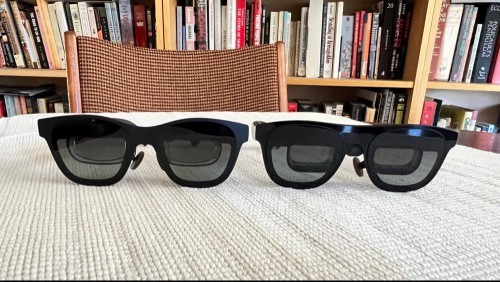
While the style isn't identical, it's similar. Both devices look like bulky sunglasses with something else going on, so the looks department is a tie. But there is a slight difference in terms of comfort. One of the main improvements of the new glasses is the onboard X1 chip, but chips add weight and heat, so the older model is slightly lighter than the newer one (79 vs. 84 grams), and the XReal One Pros heat up a bit if you use them for any length of time. In terms of long-term wearability, then, the slight edge goes to the older XReal Air 2 Pros.
Winner: XReal Air 2 Pro
Audio quality
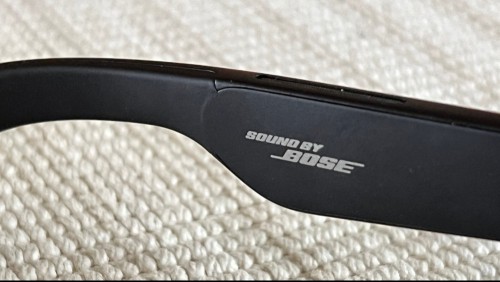
Among the improvements in this generation of XReal glasses is the audio, and it's a big improvement. The company has added a “sound chamber," tuned by Bose, to the XReal One Pros, and it definitely provides richer, more balanced audio than the non-Bose XReal Air 2 Pros. The audio in the older glasses is fine, but the audio in the newer product is noticeably better.
Winner: XReal One Pro
Connectivity and compatibility
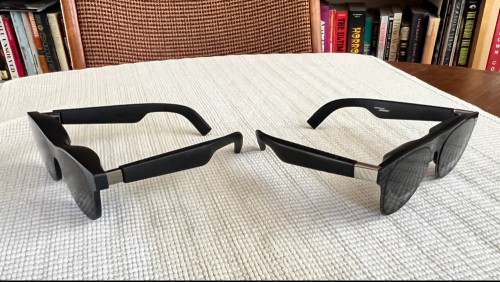
Both of these devices connect through USB-C video out, so they work with the same devices. Both are compatible with the XReal Beam, but only the XReal One Pros can also hook up to an XReal Eye camera.
Winner: XReal One Pro
Future potential
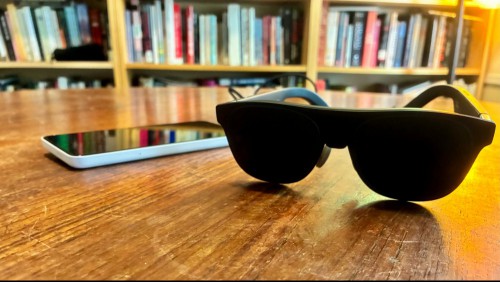
One of the intriguing things about the newer generation of XReal glasses is the modular design. There’s an input slot between the lenses, which, right now, is used for the XReal Eye, but theoretically, anything could slot in there to improve the glasses or add functionality. So if you're, thinking in terms of what these glasses could do, there are any number of possibilities with the XReal One Pros. It's unlikely that a lot will be added to the XReal Air 2 Pros.
Winner: XReal One Pro
Coolness factor

These are bleeding-edge tech items; the kind of things you buy because you want them, not because you need them. If you're the type of person who likes having cool tech just because it's cool, 2023's model is not going to cut it. This is not the kind of product that "gets better with age."
Winner: XReal One Pro
Price
A pair of XReal One Pro glasses currently retails for $649.00. A pair of XReal Air 2 Pro glasses costs less than half of that: $299.00. But "value" is hard to calculate with niche products like these—how much should a slightly wider FOV cost? What is an extra 200 NITS of brightness worth to you? It's very subjective, but if it helps, the cost difference is roughly the same as the difference between the entry level $599 iPhone 16E and the premium 16 Pro Max that starts at $1,199. Both great phones, but some people simply gotta have a better camera.
Winner: Tie
And the Winner Is...
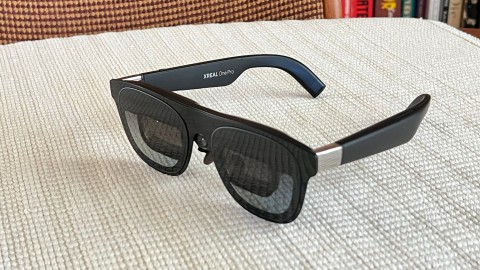
This is a close one, because the older glasses are still very impressive and there's a huge price difference—but overall, the XReal One Pros take it. Even though it isn't a radically different product in many ways, the number of smaller improvements add up, and the potential for future use put it over the top.
Plus, the kind of person likely to buy advanced AR smart glasses probably isn't as concerned with the price as other types of buyers—this isn't a necessary item, it's an indulgent splurge, so you might as well splurge big.
Covering smart glasses, VR headsets, popular culture, and more.
